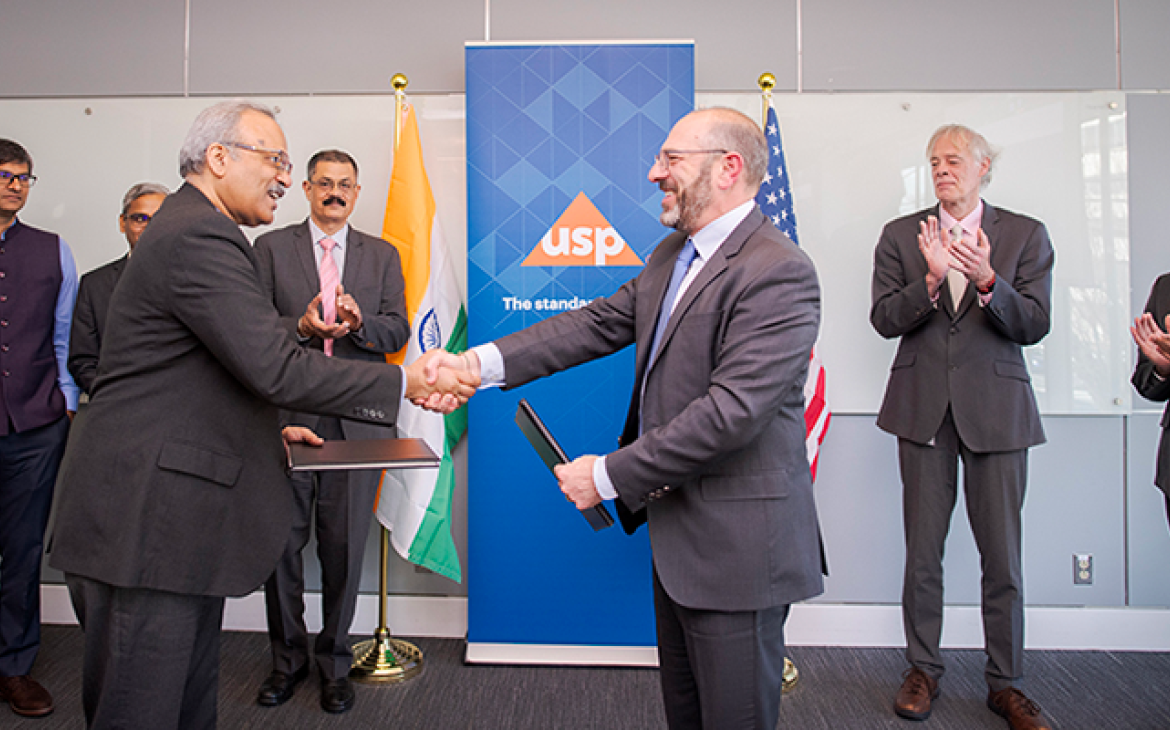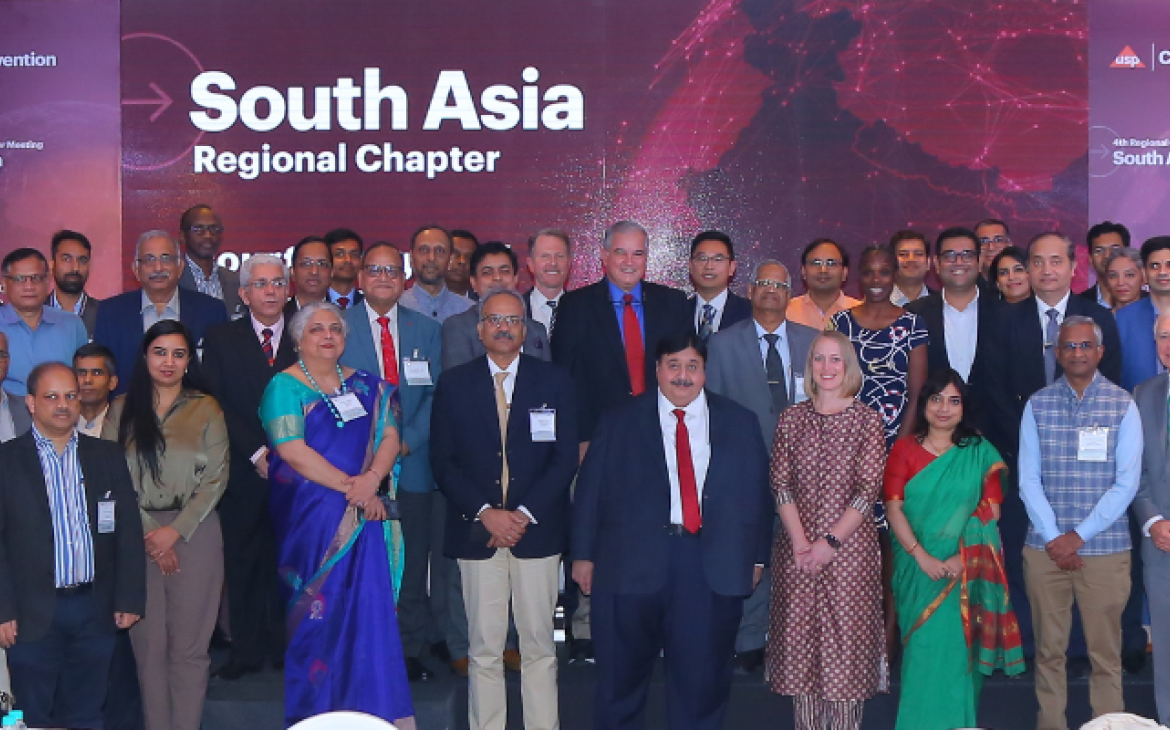
Antimicrobial resistance (AMR) is a global health challenge which can undermine standard treatments and procedures on which we have come to rely. Increasing resistance to frontline antibiotics can result in routine procedures, from elective surgery to C-sections, becoming life-threatening, complicated, and costly due to bacterial infections. AMR also undermines our ability to treat common infectious diseases. Preserving antibiotics to use when they are needed, eliminating their overuse or abuse, and assuring their quality is therefore critical. Our recent USP Quality Institute-sponsored research, published in the journal Scientific Reports by Nature Research, sheds light on the link between poor-quality antibiotics and AMR.
Antibiotic use during the COVID-19 pandemic
Unfortunately, antibiotics are often overused and overprescribed during emergencies, even when they are least likely to be effective. The ongoing COVID-19 pandemic is one such instance. A recent report showed that doctors heavily prescribed antibiotics in the beginning of the pandemic, desperate to try to help in any way by preventing secondary bacterial infections.
This excessive use of antibiotics increases the risk of AMR and serves as another lesson about prudent antibiotic usage. The use of antibiotics during the previous SARS epidemic resulted in a sharp local rise in AMR. The World Health Organization (WHO), concerned about the increased antibiotic usage, has issued guidance to not use antibiotic therapy or prophylaxis in mild COVID-19 patients.
Substandard and falsified medicines exacerbate danger of antibiotic misuse
Increased prophylactic or over-the-counter usage of antibiotics is even more concerning for parts of the world with a high prevalence of substandard and falsified medicines. Substandard medicines are authorized products that fail to meet quality standards or specifications, with the main problem usually being inadequate amounts of active pharmaceutical ingredient (API) content. In low- and middle-income countries, about 1 in 10 medical product samples fail to meet quality standards, and antibiotics are among the most commonly reported poor-quality medical products. Moreover, medicine shortages and increased trade of falsified drugs due to supply chain issues arising from the COVID-19 pandemic increase the risk of poor-quality products reaching patients.
A dose of substandard antibiotic may not have enough active ingredient to clear the bacterial infection, leading to the development of AMR. Furthermore, there may still be enough antibiotic to stimulate development and selection of resistant bacteria, which would then be more difficult to clear with high-quality medicines. Indeed, substandard antibiotics, in this way, provide an optimal opportunity for bacterial resistance development.
Small antibiotic resistance changes can have a big impact
Until recently, little has been known about how poor-quality medicines contribute to AMR. Our research contributes to the small but growing number of studies that shed some light on this elusive link. The goal of our study was simple – to understand how substandard antibiotic drugs (i.e., drugs that have lower than the therapeutic dose to kill the bacteria) affect the growth of bacterial populations – and if they cause any resistance. More specifically, we wanted to determine whether a range of inadequate amounts of ciprofloxacin, a common and widely prescribed antibiotic, creates antibiotic resistance, and if so, identify the hallmarks of this resistance.
The results revealed that poor-quality antibiotics (in this case, ones with low amounts of ciprofloxacin active ingredient) can drive bacteria to become resistant not only to ciprofloxacin, but also to a host of other drugs – a phenomenon known as multi-drug resistance. We found that bacteria exposed to lower than lethal doses of ciprofloxacin acquire single mutations that lead to low-level antibiotic resistance, which could be overlooked in the clinic. These low-level resistant bacteria have stable genetic changes, but because their resistance level is low, they may not be picked up using clinical susceptibility tests. This means that there may be an accumulation of bacteria that are pre-disposed to survive additional antibiotic treatment and gain more mutations for increased multi-drug resistance.
We also found that many of the mutations were in genes for broad mechanisms of resistance such that the bacteria were now resistant to unrelated types of antibiotics. For example, while we only exposed the bacteria to low doses of ciprofloxacin, the bacteria also became resistant to antibiotics such as ampicillin and tetracycline. Indeed, this phenomenon also has been observed in the clinic. This finding has broad and serious health implications, especially for poor-quality antibiotic usage, as low-level resistant bacteria would be more likely to develop higher-level resistances and contribute to treatment failure.
AMR requires critical attention and a multi-disciplinary approach
The ongoing COVID-19 pandemic has exposed the severe and devastating global health repercussions of disease outbreaks. Challenges associated with the pandemic, including antibiotic misuse and the increased risk of poor-quality antibiotics in the supply chain, have also heightened the risk of AMR. Inaction at institutional and policy levels to the growing problem of AMR could have dangerous consequences, especially because the issue could be larger than reported. This is a problem that connects us all – in cities and rural areas, in low- and high-income countries. Unfortunately, the impact on poorer countries and communities is likely to be disproportionate and requires urgent attention.
Often, surveillance of antibiotic resistance is for clinical resistance and ignores low levels of resistance, leading to an under-representation of this threat. Our findings show that this may be a blind spot in the effort to tackle this global challenge. Our results can help inform policy development by broadening the focus of antibiotic resistance surveillance. In addition to the active ingredient, medicines can contain other compounds, called excipients, as well as small amounts of process impurities. More research is needed to understand how the presence of these compounds impact antibiotic resistance.
AMR is a multi-faceted problem. An effort to connect seemingly disparate disciplines, including bench research, epidemiology, economics, and public health policy, is urgently needed to address this complicated challenge. Intersection of these fields will be critical for ensuring that research findings will have their broadest impact and allow us to create a more equitable, safer, and healthier world for all.


